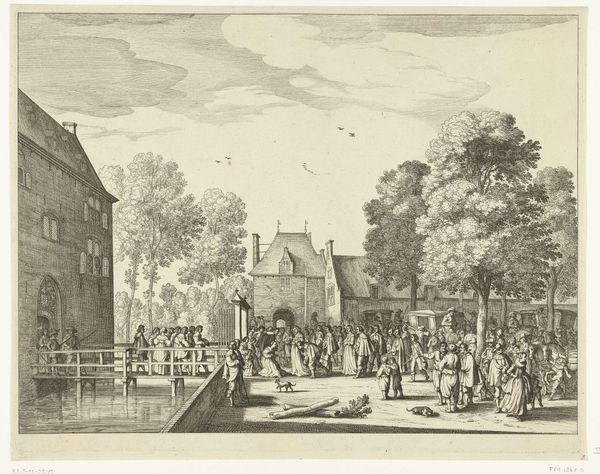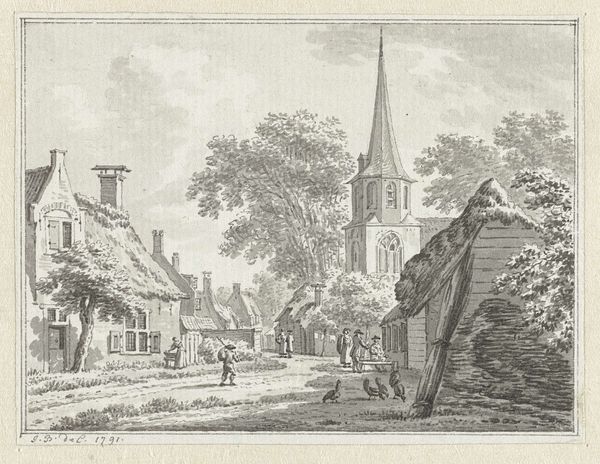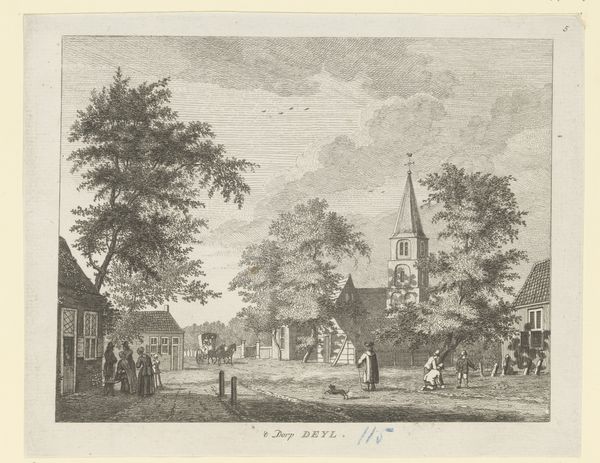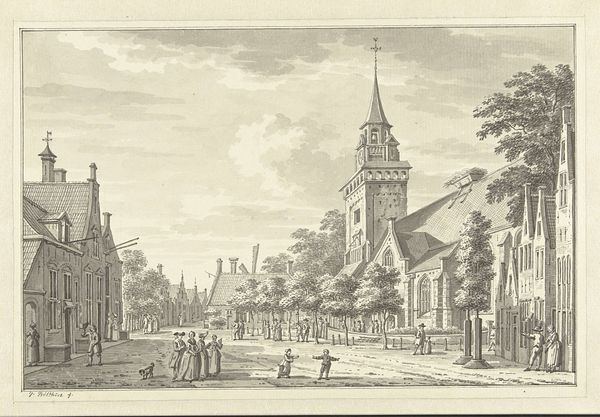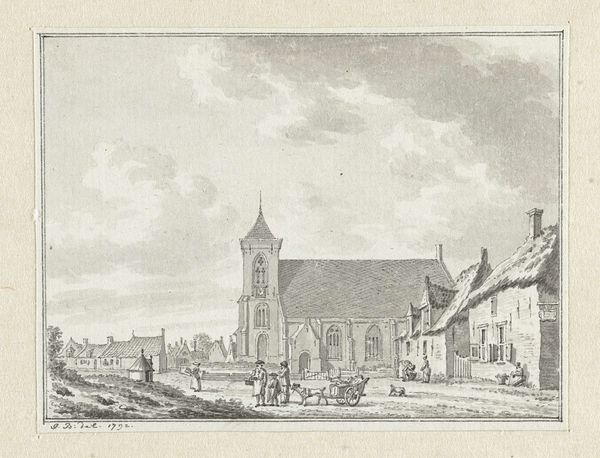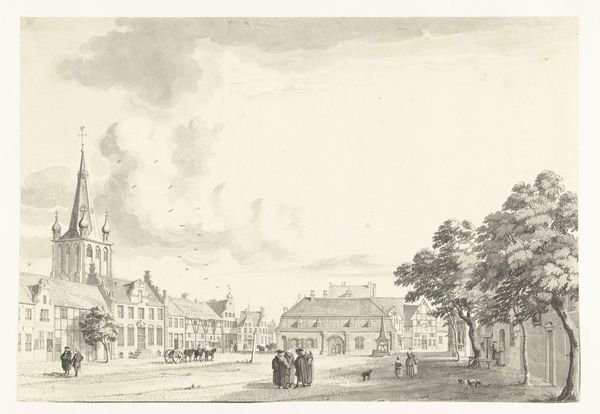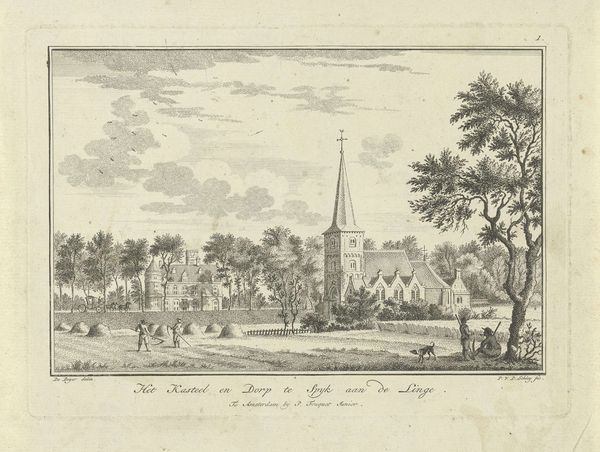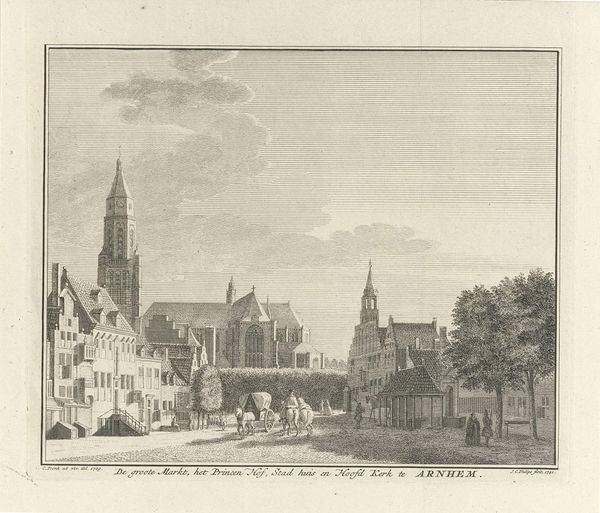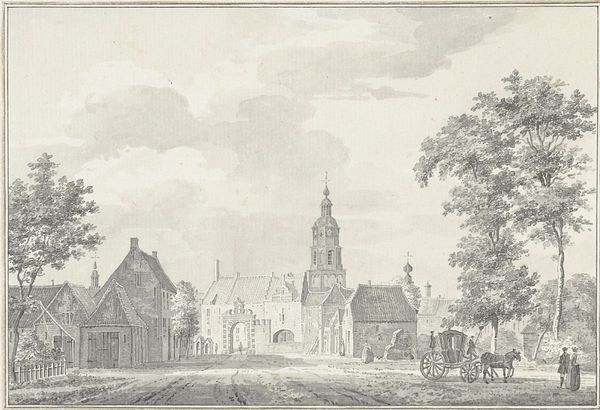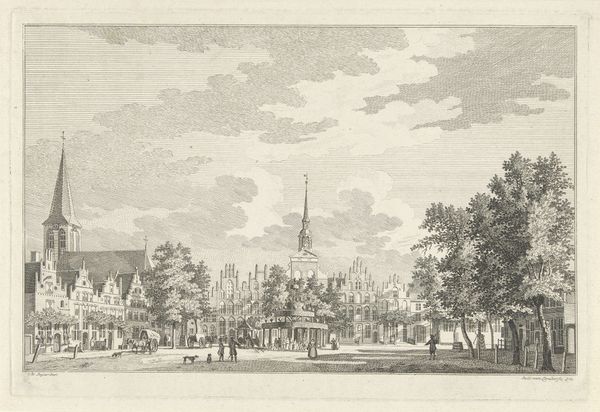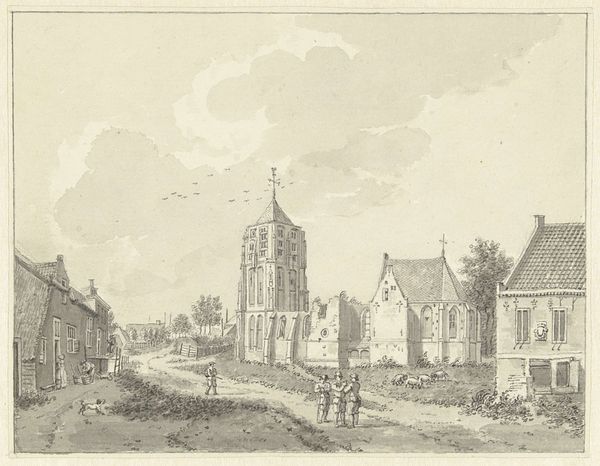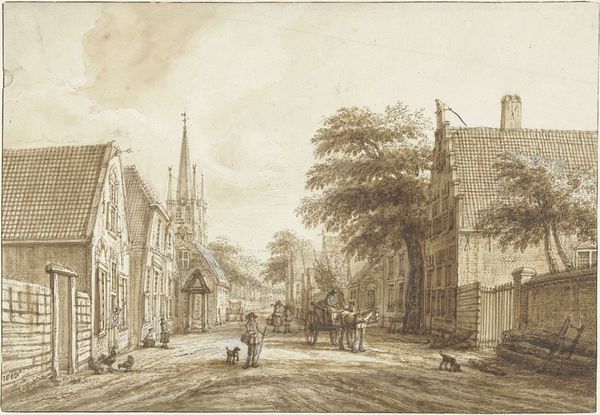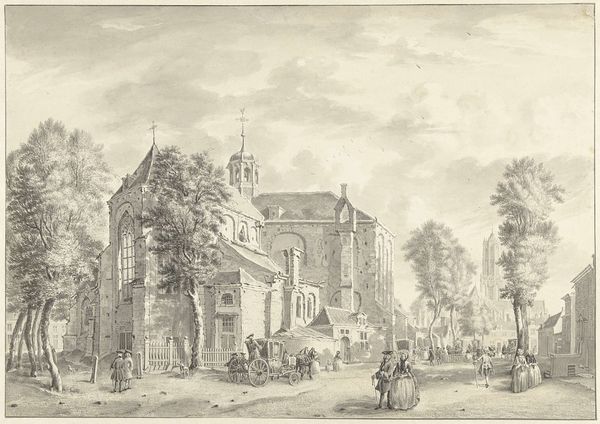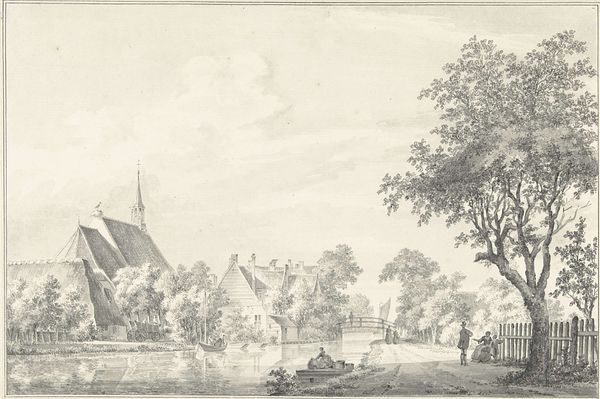
drawing, paper, ink
#
drawing
#
neoclacissism
#
landscape
#
paper
#
ink
#
cityscape
#
genre-painting
#
realism
Dimensions: height 148 mm, width 190 mm
Copyright: Rijks Museum: Open Domain
Curator: Ah, a glimpse into the past. This is "Markt in het dorp Valkenburg" by Hermanus Petrus Schouten, dating roughly from 1757 to 1822, housed here at the Rijksmuseum. It’s rendered in ink on paper, a lively depiction of a market day. Editor: My first thought is… it's bustling, isn't it? Even with the limited palette, there's such a sense of activity. You can almost hear the vendors and the chatter of the crowd. I’m interested in how Schouten used very economical means. Curator: Precisely. The piece’s success relies so heavily on the skilled manipulation of ink to create depth and atmosphere. Look at the paper itself – a fairly commonplace material elevated through technique. How does the drawing's inherent materiality intersect with its function as a representation of village life? The materials speak to me of accessibility. Editor: From a historical perspective, this image offers insights into the socio-economic fabric of the time. Markets were not just places of exchange, but vital hubs for social interaction. Schouten's representation highlights the role of the church in the village life as well. What statement is the artist making? How does he portray class and hierarchy? Curator: Certainly. But the image, with its attention to ordinary labor and social exchange, offers a challenge to the more formal academic art of the time. Schouten seems intent on portraying the everyday labor inherent to trade. Consider too that ink drawings were often studies for larger works—raising the question: is the value in the finished object, or in the act of preparation? Editor: That tension is very engaging, especially regarding who the artist made this for. Was this drawing destined for a collector's portfolio, or was it part of a larger series intended for public consumption? Either possibility would influence the value, production, and ultimately reception of the piece. And Valkenburg itself; what was its standing in Dutch society at this time? All of that informs our appreciation. Curator: Indeed, the socio-economic forces play directly into artistic choices, consciously or not. A focus on the tools and modes of creation—the paper, the ink, the lines—unearths often overlooked but crucial aspects of our interaction with this art. Editor: Seeing this interplay is essential for unlocking how the visual arts impacted and were, in turn, influenced by the public imagination in eighteenth-century Netherlands. This image allows a modern audience to reconsider the concept of progress as it existed during the Neoclassical age. Curator: Yes, that intersection really encapsulates so much about the artistic landscape of the time. It is like we ourselves get to participate in that marketplace exchange when encountering a work such as this! Editor: Agreed, and seeing it that way makes the past feel all the more connected to our present.
Comments
No comments
Be the first to comment and join the conversation on the ultimate creative platform.
